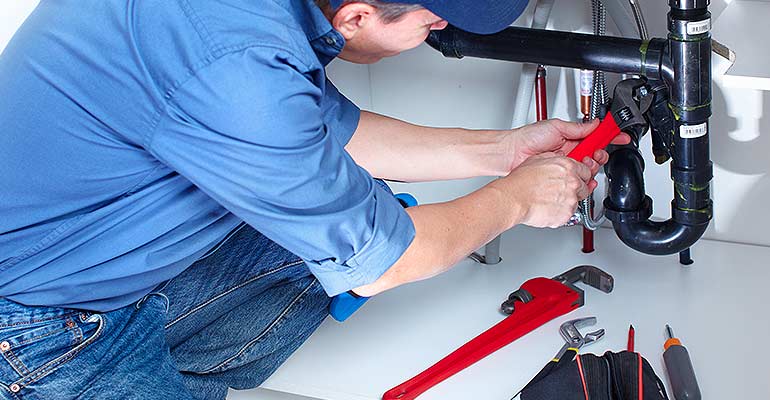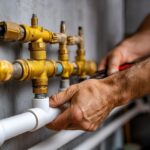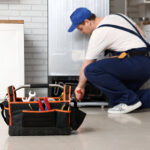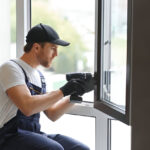A garbage disposal is a handy kitchen appliance that helps to keep your sink free of food waste. But, what happens when it stops working? Before you call the plumber, there are some quick and easy repair solutions that you can try at home. In this post, we will cover all the basics of a garbage disposal- what it is and how it works. We have also compiled some safety tips to keep in mind before attempting any repair work. Additionally, we will guide you step-by-step on how to reset the disposal and fix common issues like leaks. With our easy-to-follow guide, you’ll be able to get your garbage disposal up and running again in no time!
What is a Garbage Disposal?
A garbage disposal unit is an appliance installed under the kitchen sink to efficiently dispose of food waste. Connected to the sink drain, it grinds the waste into smaller pieces before discharging it through the drainpipe. Regular maintenance helps prevent clogging and ensures smooth operation.
Safety Tips for Garbage Disposal Repair
When performing garbage disposal repair, it is crucial to prioritize safety. Before starting any repairs, make sure the power to the unit is turned off by either unplugging it or flipping the circuit breaker in the main electrical panel. To remove obstructions or clogs, use pliers, tongs, or an allen wrench, but never put your hands directly into the disposal, even with the power off, to avoid injuries. Additionally, check for any leaks or water damage around the unit, sink flange, or plumbing connections, addressing any issues promptly. In case of a jammed disposal, manually rotate the impeller using the reset button, hex wrench, or jam wrench to dislodge the obstruction.
Resetting the Garbage Disposal
To reset a malfunctioning garbage disposal, locate the reset button typically found on the bottom of the unit or a red button with the same function. Give it a firm press to reset. Afterward, remember to turn the power back on. In most cases, this simple reset should resolve the issue and restore the garbage disposal to its normal operation. However, if the problem persists, consider troubleshooting the unit or seeking professional help. Remember, regular maintenance and proper use of the garbage disposal can help prevent such issues in the future.
Repairing Leaks in the Garbage Disposal
Repairing leaks in the garbage disposal is crucial to prevent water damage, unpleasant odors, and potential electrical issues. To address leaks, inspect different areas such as the disposal unit, sink flange, plumbing connections, and the bottom of the disposal for any signs of leakage. If the leak is coming from the plumbing connections, tighten them using pliers or adjust the clamps. In the case of a leak around the sink flange, removing the old putty, applying new putty, and reinstalling the flange can help. However, for major leaks or electrical problems, it’s advisable to seek assistance from a professional plumber or garbage disposal repair service.
Are there any steps I should take before attempting to repair my garbage disposal?
Before you start repairing your garbage disposal, it’s crucial to take some precautions. First, turn off the power supply to the disposal to avoid any accidents. Then, gather all the necessary tools and equipment for the repair. If you’re unsure about what you’re doing, it’s always best to consult a professional plumber or electrician for assistance. Remember, safety should be your top priority when working with electrical appliances.
What are some common problems that can occur with a garbage disposal?
Common issues that can occur with a garbage disposal include clogging due to food debris or foreign objects, jams caused by a stuck impeller or flywheel, leaks from worn-out seals or loose connections, and electrical problems like tripped breakers or faulty switches.
What are some DIY solutions for fixing a malfunctioning garbage disposal?
Some DIY solutions for fixing a malfunctioning garbage disposal include ensuring it is turned off and unplugged, resetting it using the reset button, manually rotating the flywheel with a hex key if it’s jammed, and cleaning the blades and housing with baking soda and vinegar to remove debris.
When is it necessary to call in a professional for garbage disposal repair?
If you lack confidence in your repair skills or if your garbage disposal is making loud noises, emitting bad odors, or leaking, it may be time to call a professional. Additionally, if basic troubleshooting methods haven’t resolved the issue, a professional’s expertise can prevent further damage and ensure proper functioning.
What are some common issues that can arise with a garbage disposal?
Some common issues that can arise with a garbage disposal include clogging, jamming, motor failure, and issues with the electrical connection or wiring. Overuse and improper maintenance can also lead to frequent breakdowns.
When should I consider calling a professional for garbage disposal repair?
If basic troubleshooting steps fail to fix your garbage disposal or if you notice leaks and unusual noises, it’s time to call a professional. If you’re not comfortable with electrical or plumbing systems, hiring a professional is the best option. When in doubt or feeling overwhelmed, seek professional help.
a malfunctioning garbage disposal can be a major inconvenience in the kitchen. However, with some basic troubleshooting and repair techniques, you can quickly resolve common issues and get your garbage disposal up and running again. Remember to always prioritize safety by following the necessary precautions and shutting off the power before attempting any repairs. If you encounter a jammed disposal, try resetting it using the reset button located at the bottom of the unit. For leaks, identify the source and tighten or replace the necessary components. By taking these simple steps, you can save time and money by avoiding the need for professional repairs or a complete replacement of your garbage disposal.






